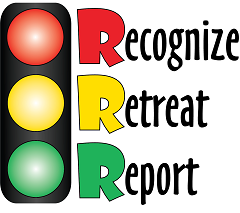Construction

Millions of acres in the United States are known or suspected to contain munitions from live-fire training or testing and even combat. These explosive hazards may be found on the surface or in the subsurface.
Munitions may be encountered during construction. Although munitions will most likely be encountered during construction in areas where the military is or has conducted munitions-related activities (e.g., operational and former ranges), they may be encountered anywhere.
Prior to working in areas with a history of military use, even areas where the Department of Defense may have completed an environmental response (cleaned up) to remove detected munitions, it is important to know a site’s history and the hazards known or suspected to be present. Information about a site may be discovered during due diligence research conducted in preparation for the property’s purchase or development. In some cases, it may be prudent or environmental regulators and safety officials may require that unexploded ordnance-qualified personnel be present to help ensure the safety of construction activities and workers during ground disturbing or other intrusive activities. Such support may be contracted by a property owners or the construction company. In some cases, move the Department of Defense may provide it.
Should you encounter or suspect you may have encountered a munition, do not approach or disturb it. Instead, stop any ground disturbing or intrusive activities in the vicinity of the suspect munition and warn others of the potential danger. Move away from the area and keep others away from it. Immediately, inform your supervisor or call local law enforcement. Local law enforcement will request support of an explosives or munitions emergency from Department of Defense Explosives Ordnance Disposal or law enforcement Bomb Squad personnel.
To protect yourself and your co-workers, determine whether munitions-related activities may have occurred at your work site, and follow the 3Rs of Explosives Safety.
For more detailed information, read the 3Rs Explosives Safety Guide for the Construction Industry below.
3Rs of Explosives Safety

when you may have encountered a munition and that munitions are dangerous.
do not approach, touch, move or disturb it, but carefully leave the area.
call 911 and advise the police of what you saw and where you saw it.
Construction Incidents
In 2004, the Baltimore Harbor Tunnel was closed when construction workers encountered several munitions at an old ship yard. One of the items was a 4,000 pound WWII-era bomb. A military Explosive Ordnance Disposal unit responded to the area. After an extensive evaluation, military explosives safety experts determined that these munitions were inert that is they did not contain explosives. Only explosives safety experts, such as Explosive Ordnance Disposal or, in some cases, law enforcement Bomb Squad personnel can identify the subtle differences between munitions that pose and explosive hazard and those that do not. http://articles.baltimoresun.com/2004-05-06/news/0405060008_1_harbor-tunnel-fairfield-bomb-defused
At the end of 2003, construction workers in Charleston, South Carolina encountered a civil war-era military munition while digging up a cobblestone driveway. The workers did not identify the munition until the next day, when a Civil War re-enactor recognized it as a Parrott shell. The black-powder filled projectile was about eight inches long and three inches in diameter. The local bomb squad responded and properly disposed of the projectile. Some munitions are difficult to identify, and not everyone recognizes the danger that even old munitions can present.
